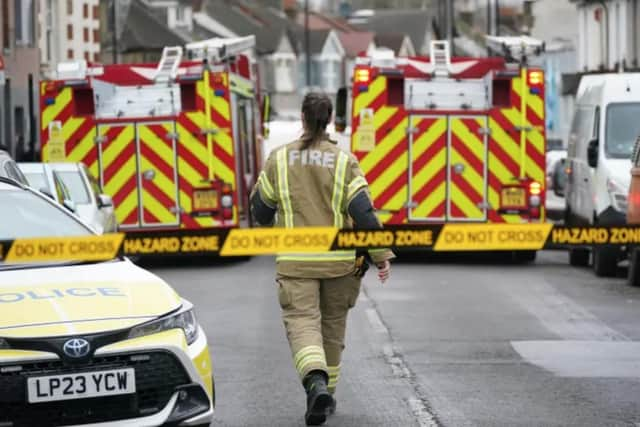Fewer people died in non-fire emergencies in Milton Keynes and Buckinghamshire last year
and live on Freeview channel 276
Across England, fire and rescue services attended more than 199,000 non-fire incidents in the year to March 2023 – a 2.3% increase from the year before.
However, fatalities at these incidents rose by 17% overall, which the Fire Brigades Union said was caused by a decade of cuts and more firefighters leaving their jobs.
Advertisement
Advertisement
Firefighters routinely attend a range of emergencies other than fires, such as flooding, traffic collisions or assisting other emergency services with medical issues.


Home Office figures show the Buckinghamshire and Milton Keynes Fire and Rescue Service reported 45 deaths in non-fire incidents they attended last year – down from 52 in 2021-22.
There were 3,875 deaths across the country, equivalent to 20 per 1,000 non-fire incidents attended.
One of the main drivers of the overall surge in deaths was a 52% increase in the number of deaths in medical incidents. There were 624 recorded in 2022-23, with 18 in Buckinghamshire.
Advertisement
Advertisement
Matt Wrack, Fire Brigades Union general secretary, said: “We have suffered more than a decade of cuts, with one in five firefighter jobs lost since 2010. The result is that response times are now worse than ever before.
“But we are also well aware that firefighters are increasingly responding to emergencies without the correct resources and fire engines.
“To reverse this trend, we urgently need investment from central Government.”
In the areas covered by the Buckinghamshire and Milton Keynes Fire and Rescue Service there were 2,802 non-fire incidents attended – a 6.2% decrease from the year before.
Advertisement
Advertisement
Of these, 534 were road traffic collisions, 253 were flooding or rescue from water, and 663 were medical incidents.
A spokesperson for the National Fire Chiefs Council said: “It is always incredibly sad to see loss of life at incidents that our fire and rescue service colleagues have attended.
“Whether that be a fire or other incident such as a road traffic collision or water-related incident, we know that it has a profound impact on the local community and the fire and rescue service.
“Fire and rescue services are committed to ensuring, through road and water safety and prevention work, that these fatalities continue to fall to achieve a greater reduction in the long-term trend.
Advertisement
Advertisement
“In areas such as medical incidents and collaborating with other emergency services, fire services have a wide range of ways in which they respond to incidents and support blue light partners, and these are based on local arrangements between fire and ambulance services.”
A Home Office spokesperson said: “The Government is committed to ensuring fire services have the resources they need to do their important work and to keep the public safe.
“In 2023-24, fire and rescue authorities will receive around £2.6 billion. Decisions on how their resources, including staff, are best deployed to meet their core functions are a matter for each fire and rescue authority.”
Top 5 Fire Safety Tips for the Home and the Workplace:
1) Install Fire Alarms and Smoke Detectors.
2) Have the Right Fire Safety Equipment.
3) Test Your Fire Safety Equipment.
4) Learn What to Do if There is a Fire.
5) Create an Effective Fire Evacuation Plan.